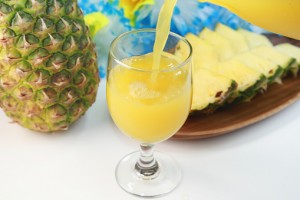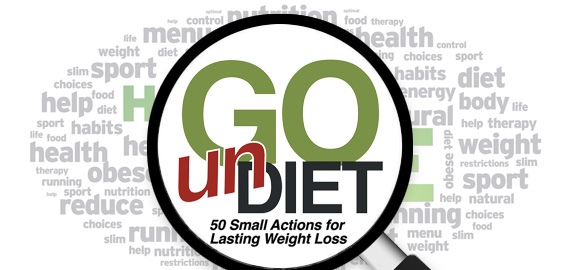The dubious practice of detox
Internal cleansing may empty your wallet, but is it good for your health?
Spring usually makes us think of cleaning — putting our records in order for the tax season, emptying our closets of winter coats, and readying our gardens. As if those chores aren't enough, we're now hearing that our bodies need a thorough internal cleansing as well. A growing number of infomercials, Web sites, and print articles are urging us to eliminate the systemic buildup of toxins that supposedly results from imprudent habits or exposure to hazardous substances in the environment. Such toxins, we're told, will sap our vitality and threaten our health unless we take measures to "detox" ourselves.
This message isn't new. For thousands of years, human beings have been trying to rid their bodies of perceived toxins. Native Americans have long used various forms of ritual cleansing and purification, such as the sauna-like sweat lodge. Bloodletting, enemas, and fasting were regarded as legitimate medical therapies until the early 20th century. Today's renewed interest in self-administered detoxification reflects concern about a variety of things, such as emerging pathogens, lead in toys, mercury in fish, smog in the air, pollutants in rivers and lakes, tainted beef, pharmaceuticals in the water supply, and synthetic chemicals with unknown properties. But do detox practices really offer the benefits claimed for them?
What is detox?
Before it was co-opted in the recent craze, the word "detox" referred chiefly to a medical procedure that rids the body of dangerous, often life-threatening, levels of alcohol, drugs, or poisons. Patients undergoing medical detoxification are usually treated in hospitals or clinics. The treatment generally involves the use of drugs and other therapies in a combination that depends on the type and severity of the toxicity.
The detox programs now being promoted to the health-conscious public are a different matter. These are largely do-it-yourself procedures aimed at eliminating alleged toxins that are held responsible for a variety of symptoms, including headache, bloating, joint pain, fatigue, and depression. Detox products are not available by prescription; they are sold in retail stores, at spas, over the Internet, and by direct mail. Many are advertised as useful for detoxifying specific organs or systems; others are portrayed as "whole body" cleansers. Here is a review of some of the most widely promoted procedures and products.
Nasal irrigation
Also known as Jala Neti or nasal lavage, this yoga-derived technique involves the use of a small pitcher (neti pot) or syringe to stream a saline solution into first one nostril, then the other. The solution passes through the nasal passage and out the other nostril or the mouth.
-
Purpose. Clinicians sometimes recommend nasal irrigation to rid the nose of environmental irritants, alleviate post-nasal drip, and reduce congestion from colds and allergies by flushing mucus, foreign particles, bacteria, and viruses out of the sinuses. Daily nasal irrigation is promoted for preventing sinus infections and headaches.
-
Evidence of effectiveness. In a handful of studies, nasal lavage has been shown to lower bacterial concentrations in nasal passages. One small study found that it eased symptoms in sinus sufferers. Some research suggests it can reduce the risk of sinus infections.
-
Risks. Fluid buildup in the sinuses.
-
Cost. Syringes and pitchers range from $4 to $300.
Detox diets
A seemingly infinite array of products and diets is available for detoxifying the entire body. One of the most popular is the Master Cleanse diet, favored by a number of Hollywood celebrities. Dieters take a quart of warm salt water in the morning; consume a 60-ounce concoction of water, lemon juice, maple syrup, and cayenne pepper throughout the day; and finish with a cup of laxative tea in the evening. Proponents of the Master Cleanse diet recommend adhering to it for at least 10 days.
-
Purpose. To restore energy, lose weight, and relieve symptoms of chronic conditions like arthritis and fibromyalgia.
-
Evidence of effectiveness. There are no data on this particular diet in the medical literature. But many studies have shown that fasts and extremely low-calorie diets invariably lower the body's basal metabolic rate as it struggles to conserve energy. Once the dieter resumes normal eating, rapid weight gain follows. Much of the weight loss achieved through this diet results from fluid loss related to extremely low carbohydrate intake and frequent bowel movements or diarrhea produced by salt water and laxative tea. When the dieter resumes normal fluid intake, this weight is quickly regained.
-
Risks. The diet is lacking in protein, fatty acids, and other essential nutrients. Carbohydrates supply all the calories — an extremely low 600. The daily laxative regimen can cause dehydration, deplete electrolytes, and impair normal bowel function. It can also disrupt the native intestinal flora, microorganisms that perform useful digestive functions. A person who goes on this diet repeatedly may run the risk of developing metabolic acidosis, a disruption of the body's acid-base balance, which results in excessive acidity in the blood. Severe metabolic acidosis can lead to coma and death.
-
Cost. The price of the book and a handful of food items.
Intestinal cleansing
Numerous kits are marketed for this purpose, most of which include a high-fiber supplement, a "support" supplement containing herbs or enzymes, and a laxative tea, each to be used daily. Manufacturers of the herbal detox kits recommend continuing the regimen for several weeks. Such regimens may be accompanied by frequent enemas.
-
Purpose. The aim is to eradicate parasites and expel fecal matter that allegedly accumulates and adheres to the intestinal walls.
-
Evidence of effectiveness. Several studies suggest that milk thistle, which is often included as a supportive supplement, may improve liver function with few side effects. But there's no medical evidence for the cleansing procedure as a whole. Promotional materials often include photographs of snake-like gelatinous substances expelled during cleansing. When these pictures are not faked, they are probably showing stool generated by large doses of the regimen's fiber supplement. More important, the rationale for intestinal cleansing — to dislodge material adhering to the colon walls — is fundamentally mistaken. When fecal matter accumulates, it compacts into firm masses in the open interior of the colon; it does not adhere to the intestinal walls as the "sludge" depicted in the advertisements.
-
Risks. Like fasting, colonic cleansing carries a risk of dehydration, electrolyte imbalance, impaired bowel function, and disruption of intestinal flora.
-
Cost. A month's supply of the supplements and laxatives sold on most Web sites is $20 to $70. The manufacturers recommend continuing the procedure for two to three months.
Foot detox
One method employs a special type of adhesive pad worn on the bottoms of the feet during sleep. Another approach is to immerse the feet for 30 minutes in a basin, sometimes referred to as an "ionic foot bath," containing salt water and two electrodes that supply a low-voltage electric charge.
-
Purpose. Toxins are allegedly drawn out of the body through the soles of the feet.
-
Evidence of effectiveness. Both methods claim to emit ions that stimulate the outflow of toxins through the feet. The pads contain tourmaline crystals, which are purported to emit ion-generating infrared rays. The foot baths allegedly generate ions by running an electric current through salt water. However, there is no scientific evidence that ionic changes in the environment can stimulate a discharge of toxins through pores in the feet — or any other part of the body, for that matter. Promoters assert that the success of the process can be monitored by a color change in the pad or in the water of the foot bath as impurities are leached from the body. But the pads, which are impregnated with wood vinegar, have been shown to turn the same dark color whether they absorb foot perspiration or are sprayed with tap water; and the color of the foot bath changes because the metal electrodes corrode.
-
Risks. No ill effects on health have been reported for either method.
-
Cost. Single-use pads average $1. Ionic foot bath sessions are available at spas for $40 to $50. Ionic foot bath devices are sold online at prices ranging from $85 to $2,000.
Oxygen detox
Air containing an 85% to 95% concentration of oxygen is delivered through a mask or nasal tube.
-
Purpose. Concentrated oxygen is said to boost the immune system, relieve headaches, increase energy, and improve cognitive function.
-
Evidence of effectiveness. Pressurized oxygen has long been used in treating people with respiratory distress or chronic lung conditions like emphysema, because their lungs cannot extract enough oxygen from normal air. Since the late 1990s, detox spas and oxygen bars have been marketing a short version of the treatment to healthy people. There is no evidence that healthy lungs need more oxygen than is contained in normal air to supply the body with adequate oxygen. (The FDA has warned that it is illegal to administer oxygen from a tank without a prescription, but most states have failed to enforce the ruling, enabling oxygen bars to thrive.)
-
Risks. Although there is little danger from inhaling concentrated oxygen, the FDA cautions against "flavored" oxygen, which may contain fragrant oil suspensions that can irritate the lungs.
-
Cost. Sessions last 15 to 20 minutes and cost about $1 per minute. Some establishments require users to buy or bring their own masks or nasal tubes.
The body's own detox system
We tend to forget that the body is equipped with a detoxification system of its own, which includes the following:
The skin. The main function of the body's largest organ is to provide a barrier against harmful substances, from bacteria and viruses to heavy metals and chemical toxins. The skin is a one-way defense system; toxins are not eliminated in perspiration.
The respiratory system. Fine hairs inside the nose trap dirt and other large particles that may be inhaled. Smaller particles that make it to the lungs are expelled from the airways in mucus.
The immune system. This exquisitely orchestrated network of cells and molecules is designed to recognize foreign substances and eliminate them from the body. Components of the immune system are at work in blood plasma, in lymph, and even in the small spaces between cells.
The intestines. Peyer's patches — lymph nodes in the small intestine — screen out parasites and other foreign substances before nutrients are absorbed into the blood from the colon.
The liver. Acting as the body's principal filter, the liver produces a family of proteins called metallothioneins, which are also found in the kidneys. Metallothioneins not only metabolize dietary nutrients like copper and zinc but also neutralize harmful metals like lead, cadmium, and mercury to prepare for their elimination from the body. Liver cells also produce groups of enzymes that regulate the metabolism of drugs and are an important part of the body's defense against harmful chemicals and other toxins.
The kidneys. The fact that urine tests are used to screen for drugs and toxins is a testament to the kidneys' remarkable efficiency in filtering out waste substances and moving them out of the body.
The bottom line
The human body can defend itself very well against most environmental insults and the effects of occasional indulgence (see "The body's own detox system"). If you're generally healthy, concentrate on giving your body what it needs to maintain its robust self-cleaning system — a healthful diet, adequate fluid intake, regular exercise, sufficient sleep, and all recommended medical check-ups. If you experience fatigue, pallor, unexplained weight gain or loss, changes in bowel function, or breathing difficulties that persist for days or weeks, visit your doctor instead of a detox spa.
-
Understanding and Recognizing Leukemia Symptoms
Leukemia is a sort of cancer of the blood and marrow. The disease
-
Easy Methods to Achieve your Weight Reduction Goal with Green Coffee Bean Extract
There are times in life when the prospect of slimming down seems impos
-
How To Losing Weight without Dieting
Unfortunately many of us should lose weight, which is a polite way
-
How to Choose Best Weight Loss Product
Weight loss is the process of getting ri
-
A Couple Of Fast Ways To Lose Weight Within A Week Or Two
Exercise is about doing. Its important t
-
Weight Loss Tips that Really Work
Many clients ask for help with weight ma
- DON'T MISS
- Are You A Fat Person Trying To Get Thin Or A Thin Person With Some Fat To Lose?
- Can Eating Too Much Fruit Make You Fat?
- How Kindness Can Help You Lose Weight
- Losing Weight Naturally - 5 More Top Weight Loss Tips…
- Fact or myth: Common medical myths busted
- 9 Free Metabolism Boosters
- Diet Solution Review
- Recommended Ideal Weight Loss Exercises
- Live Longer By Exercising Part 1
- My Story: I Lost The Weight, But Kept The Curves




